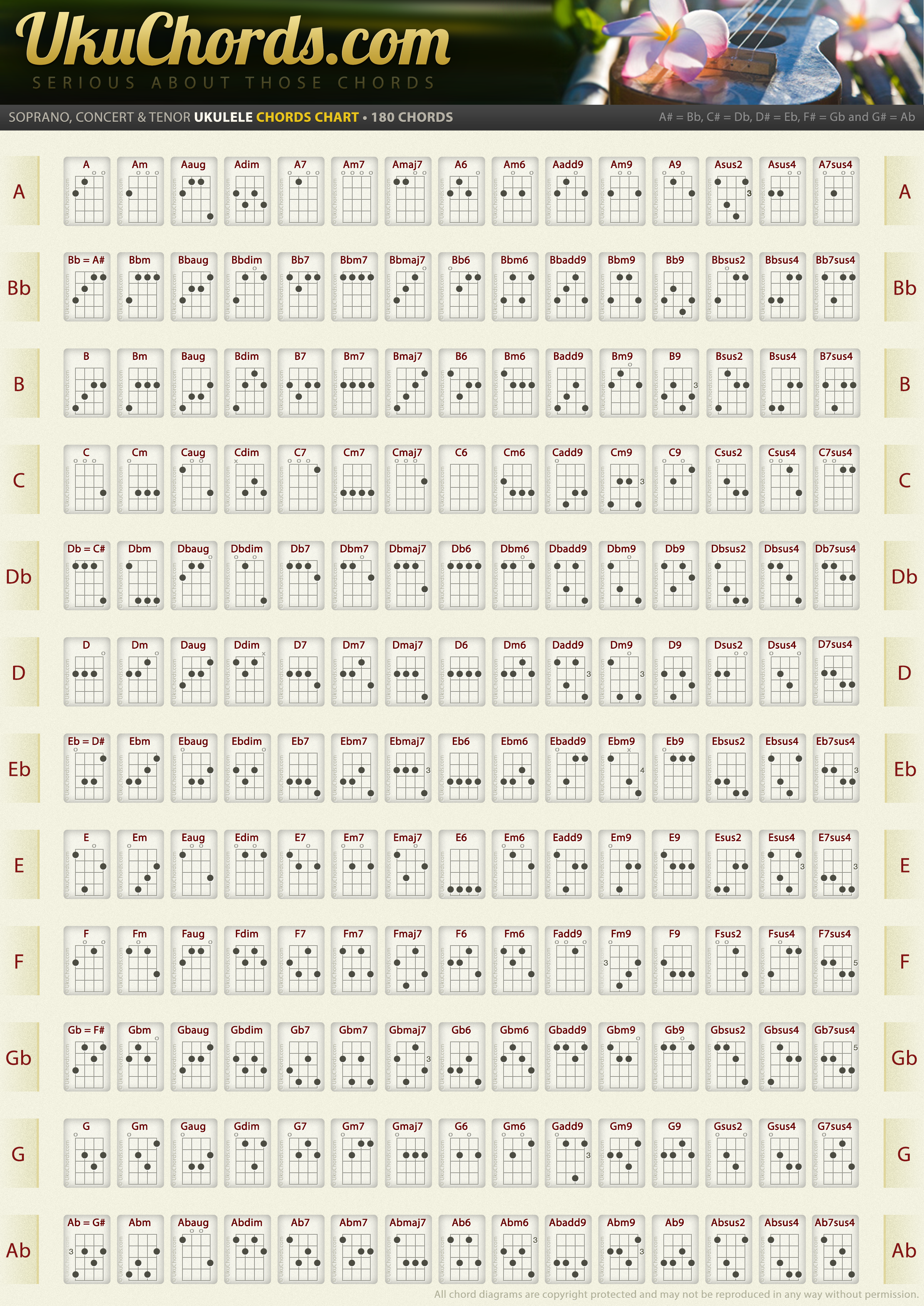

The F chord employs a straight wrist, perpendicular to the neck, and the G7 takes your wrist closer to the headstock. In this transition, it helps to swivel, or pivot, your wrist. The F chord, at left, swivels into the G7 chord, at right. Hold F, squeeze on your index finger, and then place your ring finger on the bottom string, 2 nd fret, middle finger on C string 2 nd fret, to form a triangle. You’ll be keeping your index finger down during this transition. Notice that F and G7 share a “dot” in the chord shape diagram on the E string 1 st fret. One more chord! Let’s practice the transition between F and G7. Following the progression C-Am-F-C, you can play Bruno Mars’ “Just the Way You Are.” Practice going between Am and F by lifting and placing the index finger. While staying on Am, add the index finger on the E string, 1 st fret, to form F. Practice going back and forth, third finger on the bottom, middle finger on the top, and you can play the chorus from “Roar” by Katy Perry, as demonstrated in the video above. Use the middle finger to go to the “other side” of the ukulele, placing it on the the 2 nd fret of the G string to form the A minor (Am) chord. Now that you’ve got the C chord down, you’re ready to add more. You can also do this exercise on every string for finger strengthening and finger technique.Practice placing your fingers closer to the metal fret for the cleanest sound of the chord.Try to ensure you’re bending your fingers and showing “knuckles.”.On the bottom string (the A string) add your first finger, then second finger, then third finger.

Add the third finger (ring) to the third fret, same string.

Add the second finger (middle) to the second fret, same string.Add the first finger (pointer) to the first fret.Play the A string (bottom string) with a steady pace.Place your fingers closer to the metal fret for the cleanest sound Use your third finger (ring finger) on the third fret on the bottom string-the A string-and you’ve got it! Now, here are a few “pointers” to help improve your finger technique. While holding the ukulele, when you look down the strings are G, C, E, A. Of course we can start with everyone’s favorite first chord, the C chord. Play these chords by pressing down multiple strings with one finger (usually your index finger) as shown.Did you just get an ukulele but don’t know where to start? Or you’ve learned your basic chords but sometimes they sound buzzy, or just not quite right? Here are a few tips to help you nail those first few chords on ukulele. The finger numbers at the bottom of the chart will be the same for all the barred strings. Barre chords are indicated with a curved line over all the barred strings.If you use your own fingering, you may find it more difficult to switch between different chord shapes later on. However, keep in mind that many of the standard fingerings are designed to make transitioning to other chords easier.
#UKELELE ACORDES FREE#


 0 kommentar(er)
0 kommentar(er)
